
Neuroscience: “Stress Reactivity is Modulated by Cannabinoid Type-1 Receptors in Norepinephrine and Epinephrine Neurons in a Context-Dependent Manner”
The cover artwork submitted alongside Christopher Engborg’s manuscript, title above, has been selected for the front cover of Nueroscience, Issue 585C.

UConn Today: “Randy Walikonis Encourages UConn Students to Push Boundaries of Knowledge”
Randall Walikonis was featured in UConn Today to introduce him as department head and highlight his contribution to the department.
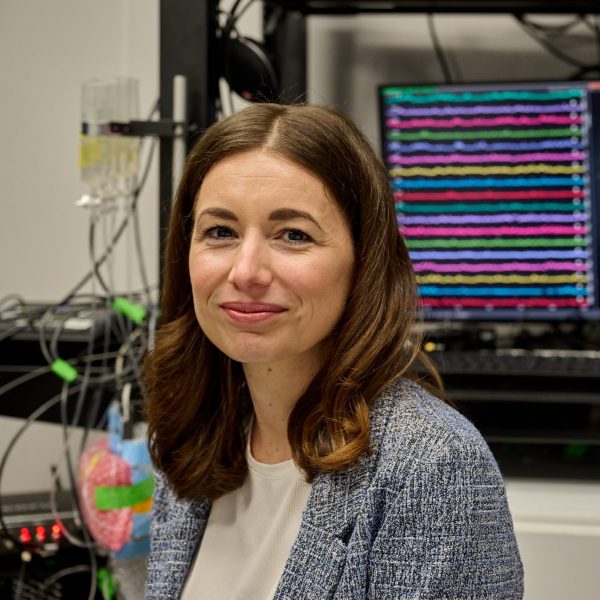
UConn Today: “Meet the Researcher: Natale Sciolino, CLAS“
Natale Sciolino was featured in UConn Today to introduce her and her work on cannabinoids and the Locus Coeruleus.
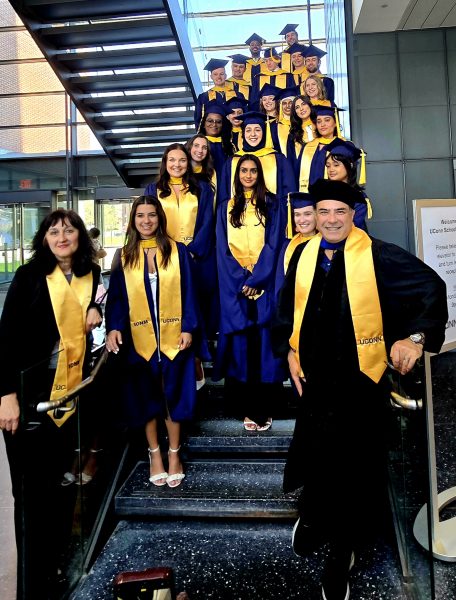
UConn PNB IONM reaches 1000 surgical cases
On April 7, 2025, the IONM program for the first time, exceeded 1000 surgical cases in an academic year. This surpassed the previous years’ case coverage by 36%.

UConn Magazine: “Checking in with Brenda Milla”
Recent PNB graduate, Brenda Milla, was featured in UConn Magazine for her post-doctoral research on breathing in sleep as well as the trajectory that got her to where she is today.

UConn Today: “Unusual Expertise Brings Coveted Autism Award to UConn”
Cleyton Sobrinho was featured in UConn Today for his recent Bridge to Independence Award from The Simons Foundation Autism Research Initiative (SFARI).


UConn Today: “Winged Wonders: Why the tiny fruit fly is mighty in scientific value”
Stella Cho and the Jianjun Sun lab were featured in UConn Today for their work and insight into the value of the fruit fly as a model organism for reproduction and genetics.
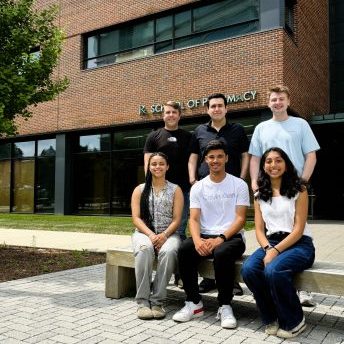
UConn Today: “Six Students Receive Research Awards this Summer in the Sartor Lab”
Kaya Patel, a participant in the UConn PNB Research Experience for Undergraduates program was featured in UConn Today for her summer work in the Sartor Lab.

UConn Today: “Neurobiologists Reveal a Secret of Ondine’s Curse”
Jaseph Soto Perez’ recent publication was featured in UConn Today for contributing to understanding how Phox2b neurons are involved in respiratory control in the brainstem.

Fall 2024 Scholarship Facilitation Fund Award
Dr. Alexander Jackson was awarded the Fall 2024 Scholarship Facilitation Fund Award from the Office of the Vice President for Research for the 2024 Neuroscience at Storrs Symposium.

UConn Today: “Ten Students Earn Awards From Gilman Foundation”
Manogna Reddy is a Physiology and Neurobiology student and Gilman Scholar who will participate in neuroscience research this summer in Salamanca Spain.

2024 CLAS Staff Excellence Award
Penny Dobbins was awarded the UConn CLAS 2024 Staff Excellence Award.


2024 UConn AAUP Excellence Awards
Two PNB faculty members were awarded UConn AAUP 2024 Excellence Awards. John Redden was awarded the Teaching Innovation award. Randall Walikonis was awarded the Service Excellence award.

UConn Today: “Revolutionizing the Cell Mapping Process“
Linnaea Ostroff was featured in UConn Today for her novel cell mapping process, ultraplex microscopy.
Recent Graduates
| Image | Name | Lab | Semester | Program | Current Position |
 |
Daria Yeroshenko | Conover Lab | Fall 2025 | PhD | |
 |
Aksir Bhura | Yu Lab | Summer 2025 | MS | |
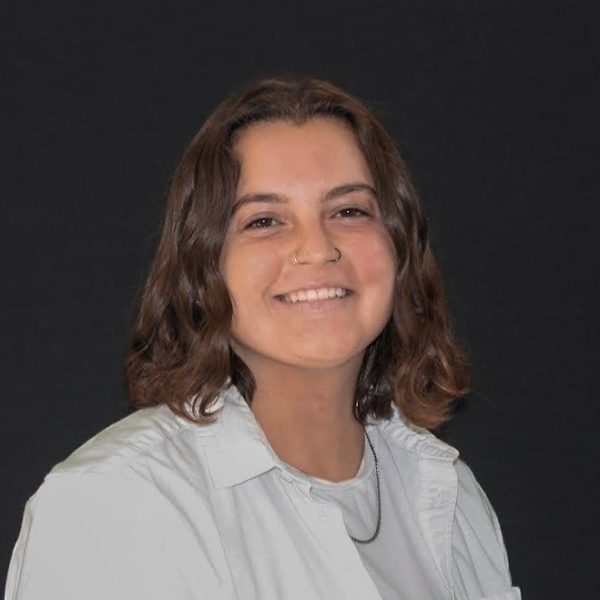 |
Sam Simonovitch | Sun Lab | Summer 2025 | MS | AP Biology Instructor, Achievement First |
 |
Melissa Tran | Zarkada Lab | Summer 2025 | MS | |
 |
Erisa Mullalli | Sun Lab | Spring 2025 | MS | |
 |
Stella Cho | Sun Lab | Spring 2025 | PhD | Scientist, Pacagen |
 |
Vivian Chow | Sun Lab | Spring 2025 | MS | |
 |
Christopher Engborg | Sciolino Lab | Fall 2024 | MS | PhD student University of Connecticut Physiology & Neurobiology, Rich Lab |
 |
Maggie Khuu | Mulkey Lab/Jackson Lab | Fall 2024 | PhD | Associate, McKinsey & Company |
 |
Yetunde Akinlaja | Nishiyama Lab | Fall 2024 | MS | |
 |
Gianna Raimondi | Ostroff Lab | Summer 2024 | PhD | Field Application Scientist at Agilent Technologies |
 |
Kate Gavilanes | Tanner Lab | Summer 2024 | MS | MD program, Duke University School of Medicine |
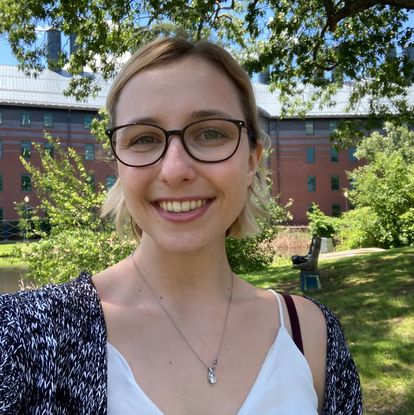 |
Julianna Herman | Conover Lab | Summer 2024 | PhD | Healthcare Consultant, Alcimed |
 |
Brenda Milla | Mulkey Lab | Summer 2024 | PhD | Neurology Postdoctoral Fellow at Beth Israel Deaconess Medical Center, Harvard Medical School |
 |
Jaseph Soto Perez | Mulkey Lab | Spring 2024 | PhD | |
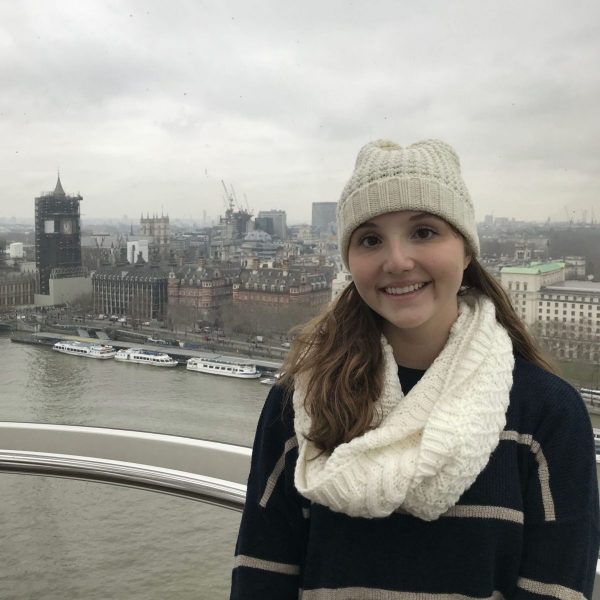 |
Nikki Rittenhouse | Conover Lab | Spring 2024 | MS | Senior Research Technician, Memorial Sloan Kettering Cancer Center |
 |
Jordana Weinberger | Yu Lab | Spring 2024 | MS | Educational Program Assistant 1 Psychology Deparment University of Connecticut |
 |
Luke Notaro-Roberts | LoTurco Lab | Spring 2024 | MS | Enzymology Bench Scientist, Pfizer |
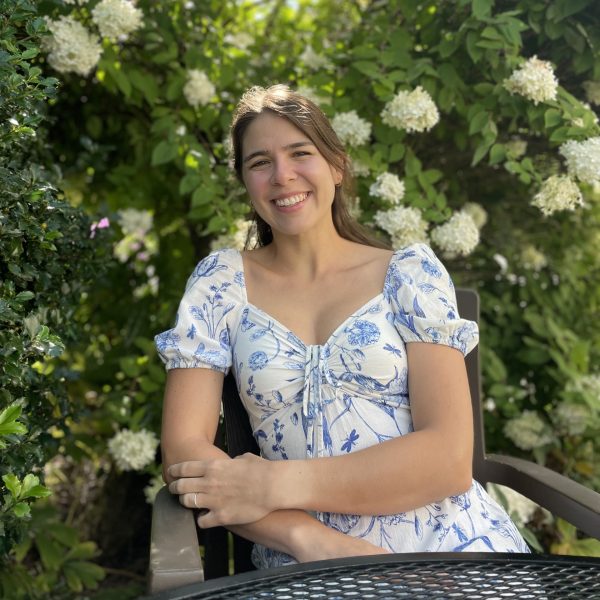 |
Rebecca Oramas | Sun Lab | Spring 2024 | PhD | Postdoctoral Research Associate, Kuan Lab, Brown University. |
 |
Andrew Beard | Sun Lab | Fall 2023 | PhD | Guest Teacher at Charlotte-Mecklenburg Schools |
 |
Morgan Macey | Conover Lab | Summer 2023 | PhD | Clinical Research Coordinator at Icahn School of Medicine at Mount Sinai |
 |
Danielle Caefer | Schwartz Lab | Summer 2023 | PhD | Postdoctoral Research Fellow, Brigham and Women’s Hospital in the Translational Neuroimmunology Research Center, Ann Romney Center for Neurological Diseases, Department of Neurology |
 |
Nissi Varghese | Tzingounis Lab | Summer 2023 | PhD | Associate Scientist, Post Doctoral Fellow, Merck |
 |
Mushirah Majid | Conover Lab | Spring 2023 | MS | |
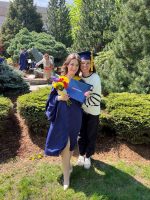 |
Alexandra Porczak | Kanadia Lab | Spring 2023 | MS | PhD student Wesleyan University |
 Recent Publications
Recent Publications
- Mislocalization of KCNQ2 Channels as a Pathogenic Mechanism in KCNQ2 Developmental and Epileptic Encephalopathy December 19, 2025KCNQ2 potassium channel variants are linked to developmental and epileptic encephalopathy (DEE). However, the mechanisms by which pathogenic variants, especially those outside known hotspots, such as the S4-S5 linker, lead to disease remain unknown. Here, we examined the H228R variant, a pathogenic mutation in the S4-S5 linker associated with DEE. We tested whether H228R induces […]Kristen Springer, Heun Soh, Raquel Paz Zavala, Nissi Varghese, Cathleen Lutz, Aamir R Zuberi, Alexander C Jackson, Anastasios V Tzingounis
- ILP8 serves as a mature follicle sensor to prevent excessive accumulation of mature follicles in Drosophila ovaries and oocyte aging October 31, 2025Excessive mature follicle accumulation in ovaries harms oocyte health and offspring viability. The mechanism by which females count mature follicles in their ovaries remains a mystery. Recent work demonstrated that Drosophila insulin-like peptide 8 (ILP8) is expressed in mature follicle cells but not in younger follicles. Here, we found that ILP8 is not essential for […]Rebecca Oramas, Katarina Yacuk, Stella E Cho, Natalie R Aloisio, Jianjun Sun
- Multilayer regulation underlies the functional precision and evolutionary potential of the olfactory system October 29, 2025Sensory neurons must be reproducibly specified to permit accurate neural representation of external signals but also able to change during evolution. We studied this paradox in the Drosophila olfactory system by establishing a single-cell transcriptomic atlas of all developing antennal sensory lineages, including latent neural populations that normally undergo programmed cell death (PCD). This atlas […]Jérôme Mermet, Steeve Cruchet, Asfa Sabrin Borbora, Daehan Lee, Phing Chian Chai, Andre Jang, Karen Menuz, Richard Benton
- Developmental regulation of long-range neuroblast migration by Eph/ephrin signaling October 24, 2025In the developing mouse anterior forebrain, the rostral migratory stream (RMS) supports continued proliferation and efficient transportation of large quantities of neuroblasts from the ventricular-subventricular (V-SVZ) stem cell niche to the olfactory bulb (OB). Astrocytes aid this migration by providing a glial network through which chains of fasciculated neuroblasts move. The largest receptor tyrosine kinase […]Daria Yeroshenko, Chamalka de Silva, Anika Burli, Sarah Bellizzi, Vijender Singh, Joanne Conover
- Safety of Transcranial Motor-Evoked Potential Linked Quadripolar Montage October 17, 2025CONCLUSIONS: The use of qTceMEP does not increase or decrease a patient's risk of intraoperative injury. Both bipolar TceMEP and qTceMEP are safe, presenting a small incidence of oral injuries and no other adverse side effects.Cinira Diogo, Anthony Clanton, Stephen Holmberg, Brooke E Callahan, Adam T Doan
- Oxytocinergic signalling in the respiratory parafacial region increases the activity of chemosensitive neurons and respiratory output September 5, 2025The retrotrapezoid nucleus, located in the parafacial medullary region (RTN/pFRG), is crucial for respiratory activity and central chemoreception. Recent evidence suggests that neuromodulation, including peptidergic signalling, can influence the CO(2)/H^(+) sensitivity of RTN neurons. The paraventricular nucleus of the hypothalamus (PVN) projects to the ventral medullary surface, including the RTN, and is considered the primary […]Emmanuel V Araujo, Phelipe E Silva, Luiz M Oliveira, Yingtang Shi, Ana C Takakura, Daniel K Mulkey, Thiago S Moreira
- Stress reactivity is modulated by cannabinoid type-1 receptors in norepinephrine and epinephrine neurons in a context-dependent manner August 30, 2025Disruptions in the endocannabinoid system (ECS) and norepinephrine/epinephrine (NE/E) system are individually linked to stress-related neuropsychiatric disorders, but their interaction in shaping stress responses remains unclear. We investigated the role of the ECS's primary receptor, cannabinoid type-1 receptor (CB1R), in NE/E-producing neurons using anatomical, behavioral, and physiological analyses in a conditional knockout mouse model (Cnr1^(cKO-Dbh)), […]Christopher B Engborg, Manaswini Pujar, Rahul N Kanadia, Natale R Sciolino
- A New Method to Visualize Retinal Deep Vascular Layers Using Whole-Mount Tissue Preparations August 26, 2025The mouse retina is a widely used model to study sprouting angiogenesis. Most blood vessel staining protocols focus on the superficial vascular layer. Here, we describe a method to obtain thick sections of retina whole-mounts that allow for detailed visualization of diving vascular sprouts, and deep and intermediate-layer angiogenesis. This protocol does not require extra […]Julia Migliorati, Georgia Zarkada
- Disentangling spatial organization and splicing of rare intron classes in the human genome August 20, 2025Three-dimensional (3D) genome organization influences transcription and RNA processing, yet how the spatial positioning of genes contributes to pre-mRNA splicing has only recently come into focus. Despite these advances, it remains unclear how introns, particularly rare intron classes, are organized within the 3D genome and whether this organization influences their splicing. Here, we mapped the […]Saren M Springer, Katherine Fleck, Kaitlin N Girardini, Sean M Riccard, Jelena Erceg, Rahul N Kanadia
- Retrotrapezoid nucleus chemoreception: mechanisms of function and contributions to disordered breathing in disease August 15, 2025The brain regulates breathing in response to changes in CO(2)/H^(+) by a process referred to as respiratory chemoreception. The retrotrapezoid nucleus (RTN) is essential for this function. RTN neurons are intrinsically activated by CO(2)/H^(+). Astrocytes contribute as well, by providing a CO(2)/H^(+)-dependent purinergic drive to augment neural activity directly and indirectly by causing vasoconstriction. Here, […]Daniel K Mulkey, Thiago S Moreira, Ana C Takakura, Sarvin Jahanbani, Michelle L Olsen
- Pharmacological Targeting of Hyperpolarization-Activated Cyclic Nucleotide-Gated Cation Channels on Bladder Afferent Sensory Transmission August 5, 2025CONCLUSION: Our targeted pharmacological studies with single-fiber recordings and immunohistological staining collectively suggest that HCN channels do not play a significant role in bladder afferent sensory transmission.Eric Woon, Jorge Villalobos Santeli, Jia Liu, Longtu Chen, George Kuchel, Bin Feng
- Ketone body supplementation into a standard high-carbohydrate diet reduces fecundity, delays larval development, and may induce autophagy in Drosophila melanogaster August 3, 2025Fasting (typically intermittent; IF), caloric restriction (CR), and the increasingly-popular high-fat, low-carbohydrate ketogenic diet (KD) count among many starvation-mimicking dietary regimens known to exert diverse effects on cellular and whole-organism behavioral, developmental, and physiological parameters. These effects include lowering neuronal excitability, inducing the cellular-component-recycling process of autophagy, altering reproductive outcomes (especially in pathological cases),...Meredith L Becher, Fangyi Coco Zhai, Matthew L Gilbert, Dariana I Mota, Leroy A Griffiths, Mirsha Pierre, Ashwath R Athreya, Fiona S Boyd, Aliya M Cameron, Meaghan R Cameron, Stephan E Desir, Yumeng Han, Jacqueline Kaba, Ondrea J G Kerr, Hayden G Kowalski, Siddhi M Patel, Dulce G Pineda, Rhythm Pravasi, Maya D Ravi, Xinyue Shang, Faith Thomas, Ty J Zaccagnini, Priya Aggarwal, Natalie R Aloisio, Kate M Gavilanes, Katelyn E Mooney, Tina Fortier, Jeffrey N Divino, Craig T Woodard, Geoffrey R Tanner
- Inhibition of the minor spliceosome restricts the growth of a broad spectrum of cancers July 7, 2025Minor splicing is an under-appreciated splicing system required for the correct expression of ~700 genes in the human genome. This small subset of genes (0.35%) harbours introns containing non-canonical splicing sequences that are recognised uniquely by the minor spliceosome and cannot be processed by the major spliceosome. Using in vivo zebrafish and mouse cancer models, […]Karen Doggett, Kimberly J Morgan, Anouk M Olthof, Stephen Mieruszynski, Benjamin B Williams, Alexandra L Garnham, Michael J G Milevskiy, Lachlan Whitehead, Janine Coates, Michael Buchert, Robert J J O'Donoghue, Thomas E Hall, Tracy L Putoczki, Matthias Ernst, Kate D Sutherland, Rahul N Kanadia, Joan K Heath
- H- and m-channel overexpression promotes seizure-like events by impairing the ability of inhibitory neurons to process correlated inputs June 30, 2025Channelopathies affecting the hyperpolarization-activated cyclic nucleotide gated (HCN or h-) channel and the Kv7 voltage gated m-type potassium (m-) channel present a paradox in epilepsy research: despite experimental evidence that both over- and underexpression of these channels can be epileptogenic, channel overexpression does not appear to increase the excitatory-inhibitory (E-I) balance as caused by channel […]Scott Rich, Taufik A Valiante, Jérémie Lefebvre
- Morphology of Oligodendroglial Cells June 11, 2025Oligodendrocytes are cells in the central nervous system that are specialised to form myelin sheaths around axons. They are generated from oligodendrocyte precursor cells that persist in the adult brain and are responsible for myelin plasticity that is essential for learning and repair in pathology. Oligodendrocytes exhibit morphological and molecular heterogeneity, and, besides their role […]Arthur Butt, Adam Willis, Rachel Stevens, Ian Hunter, Akiko Nishiyama
Recent Grants

Jianjun Sun received an award from the National Institutes of Child Health and Human Development for his project, A Novel Role of Corpus Luteum in Female Reproduction. Link Here

Karen Menuz received an award from the National Institutes of Health for her project, Molecular Basis of Insect Olfaction. Link Here

Anastasios Tzingounis received a Seed Grant from the Institute for the Brain and Cognitive Sciences for his project, KCNQ2 encephalopathy variants lead to global changes to the cortical phosphoproteome. Link Here

Scott Rich received a Seed Grant from the Institute for the Brain and Cognitive Sciences for his project, Deciphering the mechanism of action of Vagus Nerve Stimulation in post-stroke rehabilitation. Link Here

John Redden received two awards from the 2024-2025 Provost’s Common Curriculum Grant Competition.

Natale Sciolino received a NARSAD Young Investigator grant from the Brain and Behavioral Research Foundation for her project, Norepinephrine circuits underlying obesity-induced negative affect.

Cleyton Sobrinho received an award from the Simons Foundation Autism Research Bridge to Independence for his project, Disordered breating in autism: screen for central and peripheral nervous system involvement and therapeutic potential.

Alexander Jackson received a joint award with David Martinelli, UCH, from the National Institute of Neurological Disorders and Stroke (NINDS) for their project, A novel trans-synaptic adhesion complex as a regulator of hypocretin/orexin control of arousal. Link Here

Cleyton Sobrinho received an award from the CCHS Network for his project, Putative roles of NTS neurons in maintenance of breathing and survival in a mouse model of CCHS.

Georgia Zarkada received an award from the Retina Research Foundation for her project, Modulation of retinal vascularization by endothelial cell genetic reprogramming.

Daniel Mulkey received an award from the DHHS/NIH/National Institute of Neurological Disorders and Stroke for his project, Molecular Signature of Parafacial Expiratory Neurons.

Xinnian Chen received an award from the National Science Foundation for her project, A Developmental Model to Understand the Process of Instructor Implementation of Evidence-Based Teaching Practices. Link Here



Andrew Moiseff received an NSF-DUE award as a Co-PI along with Tadarrayl Stark and PI, Daniel Burkey for their project Community, Identity, and Competence: Supporting Low-Income Students in Computing and the Data Sciences at the University of Connecticut. Link Here


Jeffrey Divino and John Redden received the Alan R. Bennett College of Liberal Arts and Sciences Public Health Policy Research Funding award for their project, Integrating Health Policy Into Undergraduate Life Science Curriculum. Link Here

Natale Sciolino received an award from the Brain Research Foundation for her project, Impact of Locus Coeruleus Dynamics on Gustatory Cortex Function. Link Here

Georgia Zarkada received an award from the National Institutes of Health for her project, Targeting TGFB Signaling to Treat Ocular Neovascular Disease. Link Here



Natale Sciolino, Alexander Jackson, and Anastasios Tzingounis received an internal grant from the Uconn College of Liberal Arts and Sciences for shared equipment for their project, Miniature microscopes in behaving rodents for animal vivarium and behavioral spaces. Link Here

Linnaea Ostroff received an award from the National Institutes of Health for her project, New Strategies for molecular cell-type labeling in volume electron microscopy. Link Here

Linnaea Ostroff received an award from the National Institutes of Health for her project, A Versatile Approach for Highly Multiplexed, High Resolution Imaging of Endogenous Molecules. Link Here
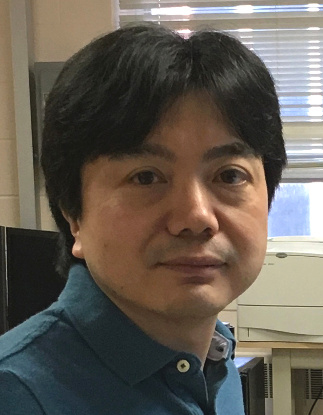

Jianjun Sun was a Co-PI on an award for Kazunori Hoshino of Biomedical Engineering for their project, A light-sheet microscopy (LSM)-based, spatially-resolved 3D dynamic mechanical analysis (DMA) instrument for developmental biology and physiology. Link Here

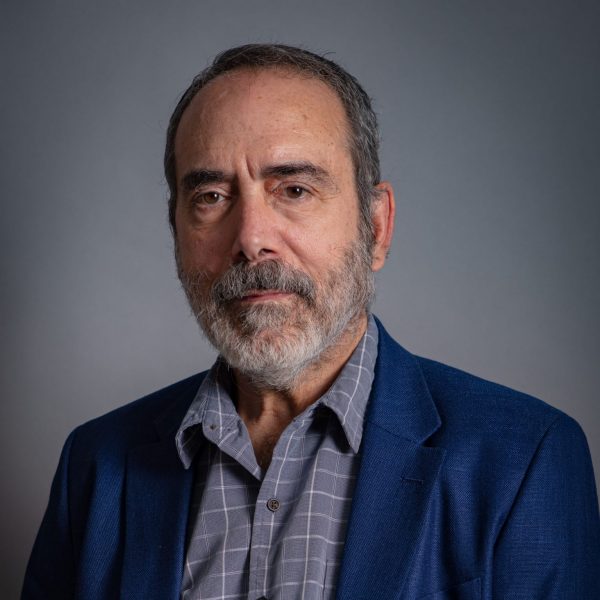
Dr. Joseph Crivello and co-investigator Dr. Karen Menuz were awarded an NSF/BIO/Directorate Biological Sciences award entitled REU Site: Research Experiences in Physiology and Neurobiology at UCONN. Link Here
Recent Awards

Rylie Starer was awarded the Biology Director’s Award at the All Biology Commencement Reception on 5/3/2025.

Abigail Boria was awarded the Excellence in Systems Genomics Award at the All Biology Commencement Reception on 5/3/2025.

McKenna Rook was awarded the Outstanding Senior in PNB Award at the All Biology Commencement Reception on 5/3/2025.



Abigail Boria from the Kanadia Lab, McKenna Rook from the Menuz Lab, and Rylie Starer from the Sun Lab were chosen among all presenters at the PNB Symposium, 4/25/25, to present at the All Biology Symoposium, 5/2/25.
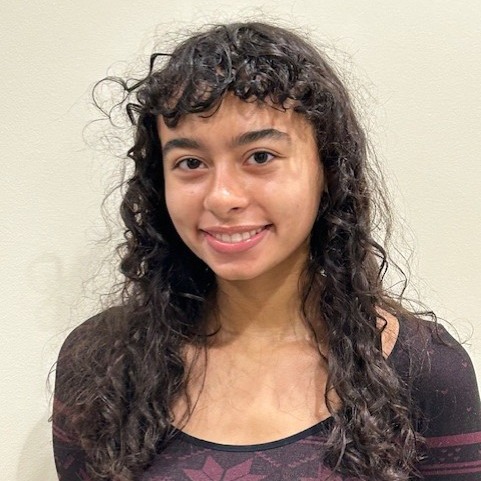
Alexandra Salem was awarded the Summer Undergraduate Research Fund (SURF) Award: Patients with Rett syndrome (RTT) are at increased risk of anesthesia-related complications usually involving respiratory insufficiency or cardiac arrythmia. Preliminary results suggest this phenotype is recapitulated in a mouse model of RTT where delivery of injectable or volatile anesthetic results in cardiorespiratory failure at doses well tolerated in control mice. Based on this, the goals of my SURF project are to determine in RTT mice i) the minimum level of anesthetic needed to induce unconsciousness and ii) test the susceptibility cardiorespiratory failure in this model in response to two commonly used general anesthetic with different putative modes of action.

Michael Jolly, a student in Dr. Daniel Mulkey’s lab was the recipient of an NIH F31 NRSA Fellowship.


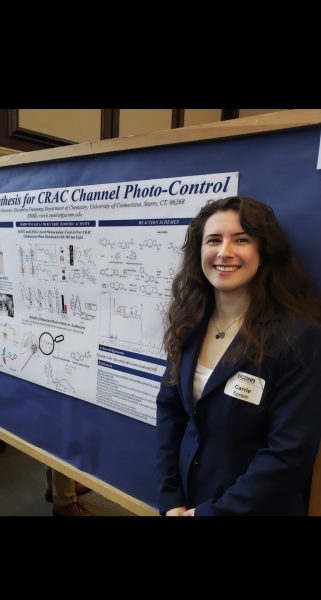
Alana Grant from the Jackson Lab, Akshara Iyer from the Yu Lab, and Carrie Epstein from the Kienzler Lab were chosen among all presenters at the PNB Symposium, 4/22/24, to present at the All Biology Symoposium, 4/26/24.
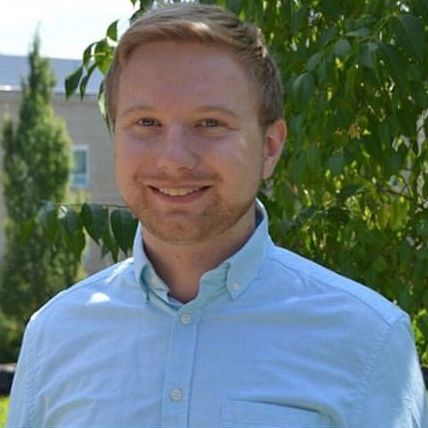


William Armstrong IV placed 1st, Julianna Herman placed 2nd, and Sydney Ballou placed 3rd in the 2023 Neuroscience at Storrs Symposium poster competition.


Andrew Beard and Danielle Caefer were selected to receive the PNB TA awards for excellence in teaching, 2022-2023.
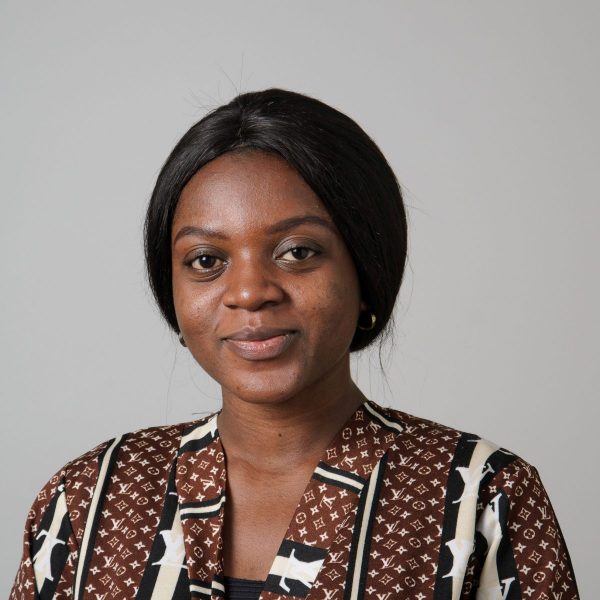
Yetunde Akinlaja in Dr. Akiko Nishiyama’s lab earned the Kenneth & Paula Munson Family Fund for Student Support in Health Sciences Fellowship (ISG).

Monica Strain, a student in Dr. Daniel Mulkey’s lab was the recipient of an NIH F31 NRSA Fellowship.

Eugene Kim, an undergraduate student in Anastasios Tzingounis’ lab and William Armstrong IV, a graduate student in Alexander Jackson’s lab won the Nu Rho Psi Poster Award for Scientific Merit at the NEURON conference in April, 2023.
Recent Conferences

Alexander Jackson organized the 27th Annual Neuroscience at Storrs Meeting in the Dodd Center/Bousfield Building on the Storrs Campus, Oct 22, 2024. Link Here

Alexander Jackson is serving as a Co Chair and co-organizer of the 2024 Gordon Research Conference (GRC) on the Hypothalamus at Bates College in Maine. Link Here

Geoffrey Tanner co-organized the 2024 Neuron Conference April 21 at the Frank H. Netter MD School of Medicine at Quinnipiac University. Link Here

Alexander Jackson was the Co-Vice Chair for the 2022 Inaugural Gordon Research Conference on Hypothalamus in Ventura, CA. Link Here
Events
- The start of semester Annual PNB Meeting and Field Day will take place on August 22, 2025. The location is TBD.
- The All Biology Symposium took place on May 2, 2025. Winners from the departmental symposiums competed for a chance to win biology wide awards, including the Ertman Award.
- The PNB Symposium took place on April 25, 2025 in PBB 131. Graduating PNB seniors gave an oral presentation, and the top three winners moved on to the All Biology Symposium.
- PNB students had the opportunity to participate in the Frontiers in Undergraduate Research Exhibitions in April of 2025 to present their undergraduate research.
- PNB hosted its semi-annual UConn PNB Lounge & Learn: Student Faculty Mixer on November 21, 2024 in BPB 130. Undergraduate students had the opportunity to learn about what research is available within PNB for undergraduate students and what it is like to work in a research lab.
- The virtual Graduate Student Recruitment Open House took place on November 15, 2024. A Zoom link was emailed to all RSVPs.
- The in-person Graduate Student Recruitment Open House took place on November 8, 2024 in GW001.
- The 27th Annual Neuroscience at Storrs Conference took place October 22, 2024 in the Dodd and Bousfield buildings.
- The Department Retreat took place on August 21, 2024 at The Branford House at the UConn Avery Point campus.